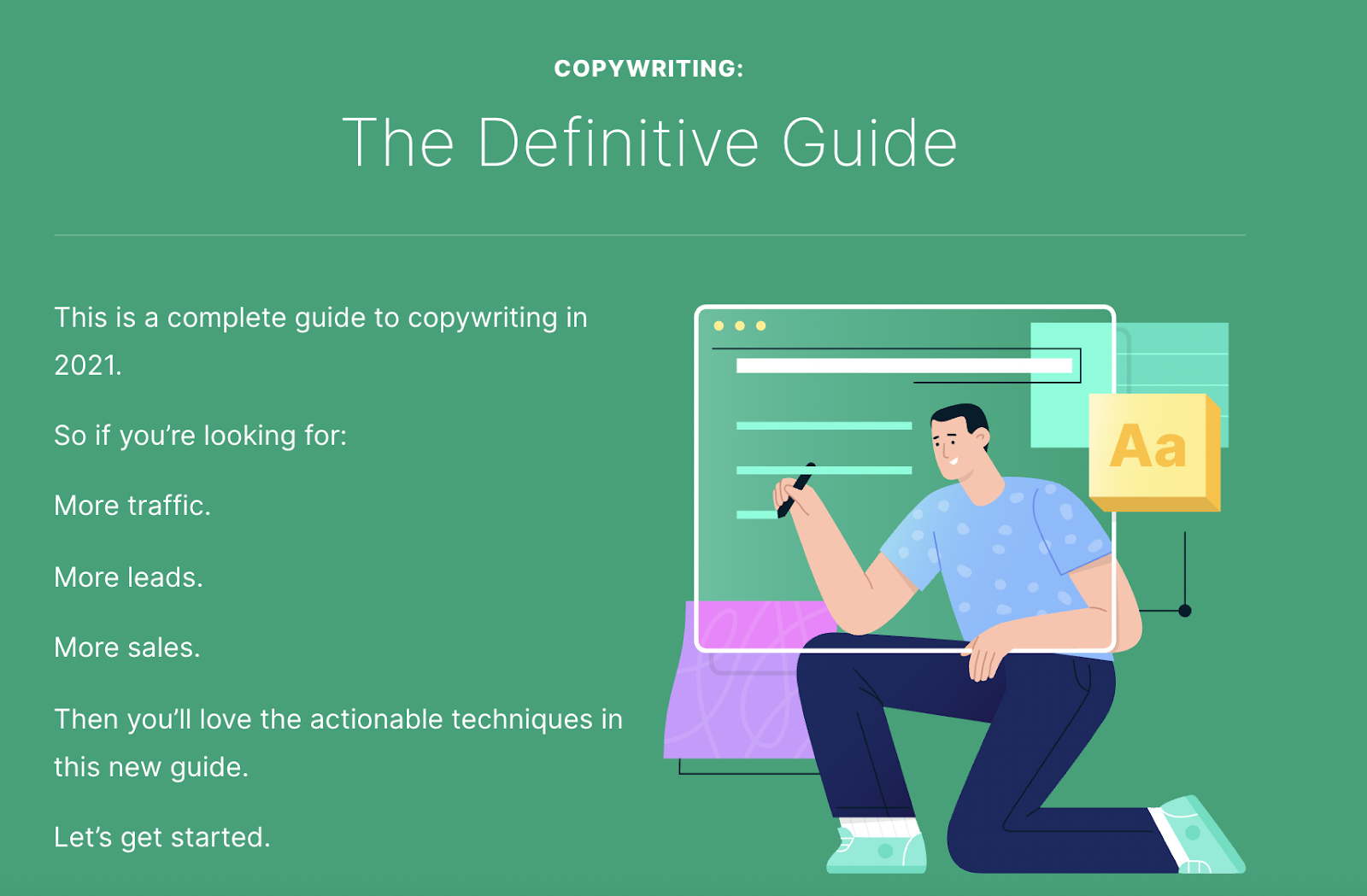5 Old-School SEO Tactics That Still Get Results

Search engine optimization (SEO) is the process of trying to give your website the best possible chance of climbing the search engine results pages (SERPs) for queries that are relevant to your business. It’s an area of digital marketing that’s been around for a while, and there are always new strategies you can use.
But, with that being said, there are still a lot of old-school tactics that will still get you new organic traffic. In this article, we’re going to break them down.
Let’s take a look!
1. Target popular and relevant keywords with your website copy
When writing your website copy, you need to be targeting popular and relevant keywords on each page of your site.
Keyword research is the process of finding the words and phrases that people are typing into search engines on any given topic. When you incorporate the right keywords into your website copy and content, you can get a boost on the SERPs and improve your search visibility.
Start with a keyword research tool like Google Keyword Planner. If you plug words and phrases relevant to your business into it, Google will provide you with a list of topics and phrases based on how competitive they are and their average monthly search volumes.
Once you have a list of relevant keywords and have decided which webpages they’re going to work the best on, be sure to weave them into your content naturally. If you force a bunch of words and phrases into your homepage copy without any context or concern about how they sound, Google could get suspicious and dock your rankings. Instead, carefully plan how you want to use these keywords, such as in your page headers, body copy, or blog content.
2. Create content people will want to share and link to
Link building is the process of acquiring hyperlinks from other authoritative websites that lead back to your own. When you build these links both manually and organically, Google takes this as a vote of confidence in your work and will give you a boost on the SERPs as a result.
To give your site the best chance of collecting plenty of backlinks, you need to be creating content that people will want to share and link back to. Here are just some particularly shareable content types you’ll want to focus on.
Infographics
Infographics allow you to present facts and figures visually , making them easier to understand. If you can create infographics that are helpful, engaging, and break down complex data in a way that’s easy to digest, people will want to share them and link back to you as the original source.
Think about how many infographics you’ve seen shared on social media in the last few years! They’re sharable because they’re informative and fun to read. If you need help creating infographics, check out this free infographic maker from Venngage.
Free tools and resources
If you can create a free tool or resource that your audience finds useful, they’ll be likely to share it with other people like them.

For instance, FreshBooks, an online accounting software provider, has created free invoice templates. Their audience largely consists of freelancers and small business owners who are likely to create their own invoices. By providing free templates that their ideal customers can use, FreshBooks is able to build trust with the right people and provide shareable content.
Because these templates are genuinely useful, websites in the business and accounting niche will be likely to share them with their audiences. This can then lead to plenty of backlinks for FreshBooks, which will boost the site’s SEO over time.

Similarly, Uplift Legal Funding, a legal loan business, has created useful and shareable content in the form of their personal injury settlement value calculator.
A user can simply plug in some of their financial information related to their case, and Uplift Legal Funding will give them their estimated potential settlement value. This is a very helpful tool that can tell prospective clients whether or not they should pursue a legal case. Lawyers, including accident attorneys, could link to this piece in order to reassure their clients that they have a solid case.
Interactive content
90% of consumers have reported that they want to see more visual and interactive content (CoSchedule). That’s huge! Tap into this market by creating content that your website visitors can interact with. If it’s fun and engaging, they’ll want to share it with their friends.

Adobe does this well with their Creative Types quiz, which helps a user determine their creative personality while showing off what some of Adobe’s programs can do. The colorful visuals and engaging questions not only tell a user a bit more about themselves, but serve as an advertisement for the company’s products in the process.
It’s fun to interact with the quiz, and it’s free to use. A lot of websites in the creative and design niche might be tempted to share this interactive content, as their audiences are likely to find it engaging. So, this is going to be very helpful for generating backlinks to Adobe’s website.
Ultimate guides
Think about what topics you’re an expert in and use them to put together an ultimate guide. This should answer any and all questions someone might have on a given topic — if you can create the most comprehensive guide out there, it’s sure to be incredibly shareable.

For instance, Backlinko, an authority in the digital marketing space, has created a sharable definitive guide to copywriting.
Copywriting is a huge part of making your website SEO-friendly and engaging, but it’s often something that is overlooked. By providing a copywriting guide for their audience, which is most likely made up of digital marketers and business owners, Backlinko positions themselves as an advertising and copywriting expert.
They offer a variety of copywriting strategies for advanced writers and beginners alike, making their content very authoritative and shareable among their audience. And a lot of related websites will be likely to link to this ultimate guide as further reading, so it’s great for boosting their SEO.
Buying guides or comparison pieces
Buying guides help a reader determine what kind of product or service they want out of a group of similar options. These can be particularly helpful forms of shareable content if you run something like an electronics store, where many of the products you offer seem similar, but actually have different pros and cons. These are sharable because, if a blogger or business wants to recommend a solution or type of product without specific endorsement, they can link to a comparison piece.
Let’s take a look at some different buying guides and comparison pieces to give you some inspiration.

For instance, SocialPilot, a company that provides social media scheduling tools, has a solid round-up of Facebook ad tools.
It’s shareable because it’s concise and breaks down the most necessary information, like the pros, cons, features, and prices. If anyone is looking for a Facebook ad tool but is overwhelmed by the options, SocialPilot’s buying guide breaks down the basic information they need, which is what makes it so effective.
If another business, blogger, or publication is looking to talk about Facebook ad tools but doesn’t want to recommend a specific company, they can promote this round-up instead. That’s why it’s such a good link magnet.

Similarly, Best Nursing Programs has an excellent guide to the best Certified Nursing Assistants programs. In a short article, they provide everything a prospective nursing student would want to know about the programs, including their length, cost, and pass rate.
Websites in the healthcare, education, or career progression niche might be interested in sharing this kind of content with their target audiences, so it can be a great tool for attracting plenty of links. This makes it a great SEO-friendly asset.
3. Create content that answers common questions from your audience
If someone is searching for the answer to a question that’s relevant to your business or industry, you’re going to want to rank well for that query! This means that you need to create content based on common customer questions. Google will take this as an indicator that you are an authority in your field and give you a boost on the SERPs, or even award you with a Featured Snippet.
To start, look through your social media comments and reviews to see if there are any common themes and questions that occur. You can also check in with your customer service team — if you can use your content to answer questions they often get, you can save them some time, too.
You should also head to AnswerThePublic and plug in some words and phrases related to your business. They will provide you with a list of questions people are asking about on any given topic! This is a great way to come up with new content ideas.
To provide you with inspiration, let’s look at a few examples of businesses who have answered questions in their content well.

For instance, RMIT Online is an online university, and they’ve created a piece of content that asks and answers the question of whether we have an oversupply of data scientists.
They take a deep dive into the probability of becoming a data scientist in today’s job market, the current demand for data scientists, and more. Because RMIT Online is a university, this type of content can help their prospective students make a decision on what they want to study.
Because the website has published this piece of content, it’s more likely to attract people who are interested in pursuing training in this area. Plus, it’s also likely to attract a lot of links from websites in the education sector, the data science industry, and career progression publications.

Similarly, MyCanadaPayday, a financial lending company, helps readers determine how to invest for the long term. Their target audiences are likely to have a lot of questions about this topic, so it’s bound to send the right people their way.
They cover trends in investing, high-risk vs. low-risk investments, and more. Investing can be a confusing and intimidating topic, but MyCanadaPayday is able to answer the initial questions their audience have on the subject and earn their trust.
This content is good for their SEO because it’s what their audience is searching for — if people are researching this topic, they very well may need other financial assistance that the company can provide.
4. Don’t forget about technical SEO
Boosting your SEO isn’t just limited to how you create content and implement keywords. Technical SEO is often overlooked, but just as important for getting your web pages to the top of the search results. You can have the best site with the best content but, if your technical SEO is poor, you just won’t rank.
Let’s break down a few different aspects of technical SEO.
- Website loading speed: You have about 15 seconds with any user before they choose to leave your website (Crazy Egg). So, ensure your website is quick to load to maximize the chance of people sticking around to make a purchase. If you aren’t sure how fast your website is, take a look at Google’s PageSpeed Analysis tool. They’ll give you a ranking and tell you how to improve.
- No dead links: Imagine how frustrated you would be if you clicked through a website and their links (with the information you were looking for) led to an error 404 page. Clean up your website to avoid this. If you’re not sure where to begin, take a look at Ahrefs’ Site Explorer tool. They can find all broken external and internal links and help you remove them.
- Mobile optimization: Recently, Google has implemented a new feature in their algorithm called the Mobile-First Index. This means that, if your website isn’t visible on mobile, it will not be shown in the Google SERPs. This means that your mobile website is just as important — if not more so — than your desktop site. Make sure it’s user-friendly and optimized appropriately.
For further reading, take a look at the technical SEO guide from Moz. They’ll show you the ins and outs of technical SEO so you can ensure your site performs well.
5. Take steps to reduce your website’s bounce rate
Your bounce rate is the percentage of people who visit your website and then leave almost immediately. Obviously, if you want to make a sale, you want this to be a low number. Plus, if Google and other search engines notice you have a high bounce rate, they will think that your website is not helpful or engaging to the viewer, and dock your rankings on the SERPs as a result.
There are a lot of different reasons why you might have a high bounce rate. For example, your website might be slow, difficult to navigate, poorly formatted, or have no strong calls to action. Let’s break down a few ways you can reduce your bounce rate.
As we stated earlier, it’s always a good idea to improve your page loading speed using Google’s PageSpeed Analysis tool. The best part about this tool is that they can tell you how to improve any score — take advantage of this resource!
Lastly, check in with your colleagues to ask them how easy your website is to use. Ask them to walk through your website and take notes! See if multiple people have the same concerns about navigation, page speed, and the like to see where you can improve.
Related Posts

















.svg)
